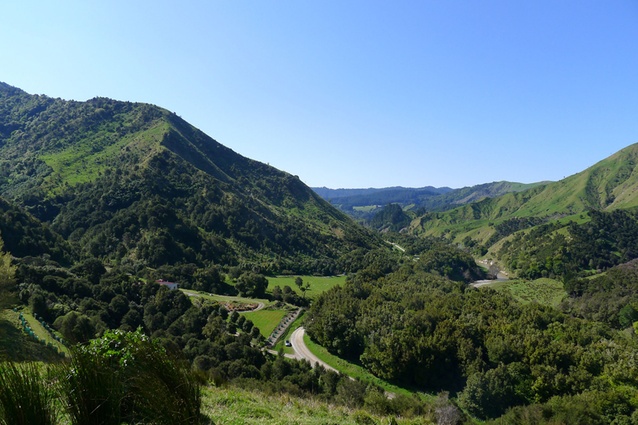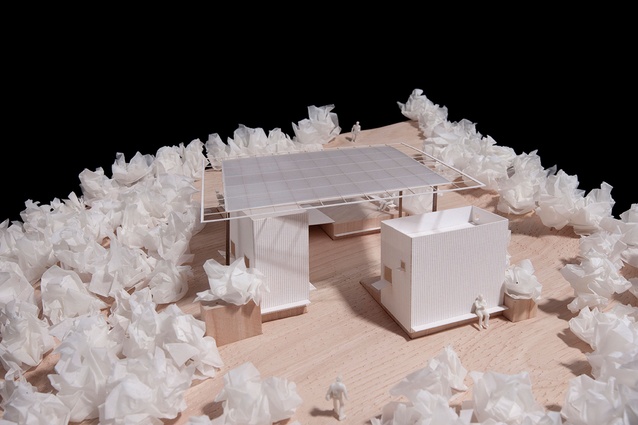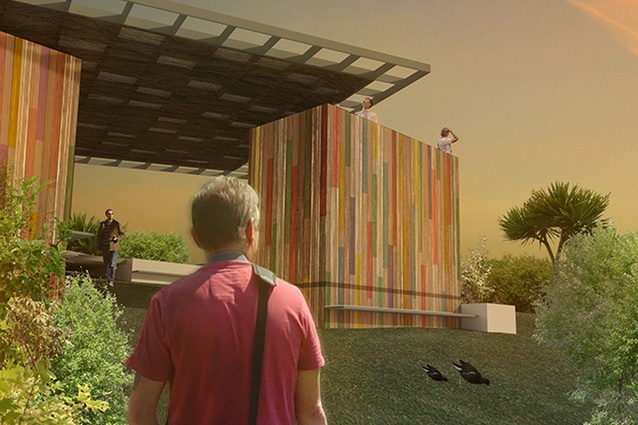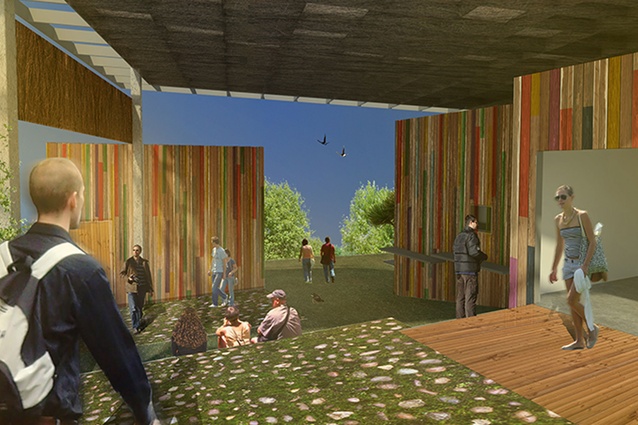Welcome to Longbush
Some thirteen years ago Dame Anne and Jeremy Salmond embarked upon an adventure; they purchased a piece of struggling native bush north of Gisborne known as Longbush. The Salmonds had no plans to farm the land, or speculate on its monetary value, but instead realised that if they didn’t intervene, the priceless ecology of Longbush would be lost forever.
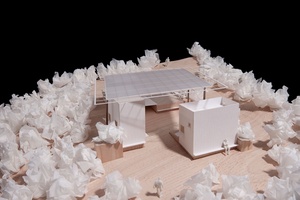
The bush had been ravaged by pests, weeds and stray cattle. It was a sad example of what has become of many of our lowland forests. The ever-energetic Salmonds began two restoration projects. Within a year they had connected with Steve Sawyer, a local ecologist and renowned endangered species expert. Soon after, they had established a local and national network of volunteers and researchers who saw the potential of their vision for a free public ecosanctuary at Longbush.
When I heard about what the Salmonds were doing I began to think more deeply about what it meant to be an architect in a small, often skint, but thoroughly special place such as New Zealand. I was convinced that architects could operate in the landscape in new ways. We can showcase our sustainable innovation and initiative to the world in a way that steps away from the jarring pastiche of the 100% Pure campaign. These efforts can be focussed towards community initiatives that we can all benefit from.
The Salmonds, together with the dozens of collaborators they have attracted, have now established the Longbush Ecosanctuary and the Longbush Ecological Restoration Trust. Success stories abound, but of particular note are the recent reintroduction of North Island Robin to the East Coast after 150 years and the creation of an inland Titi colony. The next part of the project is to expand the educational and restoration potential of the ecosanctuary within the community. It was at this point that I realised that what I had been thinking about was beginning to happen at Longbush and I wanted to be part of it.
My idea was that we could develop a space where environmental education and volunteer programmes could be focussed. We would build the architecture with a team of enthusiastic volunteers and with materials donated form local businesses. The space would be named the Welcome Shelter, in acknowledgement that all members of the public will be welcomed free of charge.
The project will provide vital visitor services, information, workshop space for the ecologist, an outdoor classroom, volunteer demonstration areas, a lookout and space for the preparation of educational programmes. It will be used by local school groups, domestic and international tourists, researchers and most importantly, anyone who wishes to learn about and enjoy our environment.
Over the next few months I will report on our progress in delivering the Longbush Ecosanctuary Welcome Shelter. Along the way you will meet the team, hear the stories of our challenges and finally be able to see the project taking shape through construction. Come and join us on this adventure.
If you would like to volunteer or donate to the project, you can do so by sending me an email.
The Longbush Welcome Shelter is a community project developed by volunteers with the generous assistance of the following organisations: Abodo Elements Timber, Fabric Structure Systems, Locker Group, Huhtamaki, Chartwell Trust, Mico Design, Otahuhu Engineering, Gib, Ecoinsulation, Thermakraft, Fletcher Steel, Calder Stewart Roofing, IMO, Ecostore, Macdonald Industries, Metroglasstech, Devan Plastics, Nicks Timber Joinery Ltd., BioLoo, Plytech, Graeme Swan, Rosenfeld Kidson, AGM Publishing, Weatherall Transport, IPL, SnapIT HD, Grant & Cooke Surveyors, One Steel, Diffuse Screenprinters, Sika, Corporate Culture, Goldsworthy, KiwiSpan Gisborne, Holmes Consulting Group, LDE Gisborne, Bunnings Warehouse Gisborne, Emmerson Transport, Francis Yates Builders, Graham Ball Builders, Monkey Toe, FL Bone, CNC Pro Cut, Tumu ITM.

